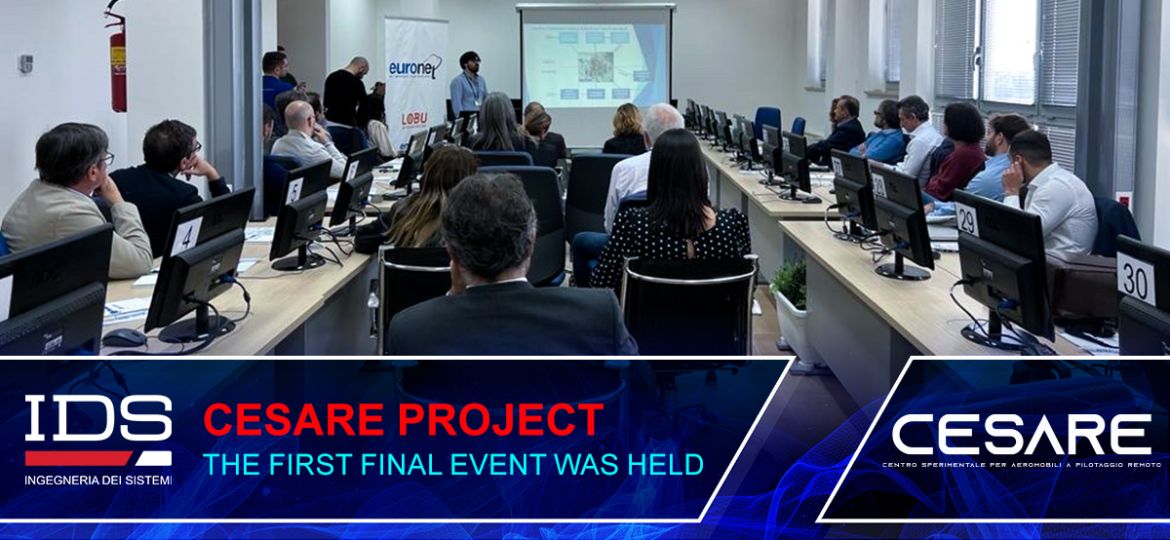
CESARE Project Comes to a successful conclusion
The first of a series of final events for the closing of the CESARE project was held at the Marcello Arlotta Airport in Taranto – Grottaglie on November 16, 2023.
The objective of the CESARE project, developed over a 63-month period, was to create and operate an innovative factory based on “digital manufacturing” criteria for the production of unmanned systems and advanced sensors. The project was applied to the specific context of the Remotely Piloted Aircraft Systems (SAPR) industry.
The event brought together representatives from the project consortium, that included IDS Ingegneria Dei Sistemi SpA, now a Fincantieri NexTech company, Altea SpA, Sinds srl and Euronet Srl, as well as other stakeholders from the SAPR industry, academia, and government. During the event, the project partners presented the results of their work, including the development of a new digital manufacturing process for SAPR production, the implementation of new technologies such as 3D printing and augmented reality, and the creation of a new training program for workers in the SAPR industry.
The main contribution of IDS, the project leader, was to design and launch fixed-wing and rotary-wing APR systems into production at the former fire brigade barracks at Grottaglie airport, following a “Digital & Lean Manufacturing” scheme.
The project also focused on creating an integration and testing laboratory for APR systems in the Puglia Region, with the specifications of: design and creation of mission simulation tools; design and implementation of an “Iron Bird system” for IDS Remotely Piloted Aircraft Systems; design and implementation of procedures for conducting flight tests, telemetry acquisition and data post-processing.
IDS also contributed through integrating the payloads of the co-proponents of the Program Contract into its RPAS and carrying out in-flight testing on them at the segregated area of Arlotta Airport. The integration took place in close collaboration with the co-proposers from the early stages, and specific design and development activities of the APR variants were required to enable them to be accommodated for testing.


